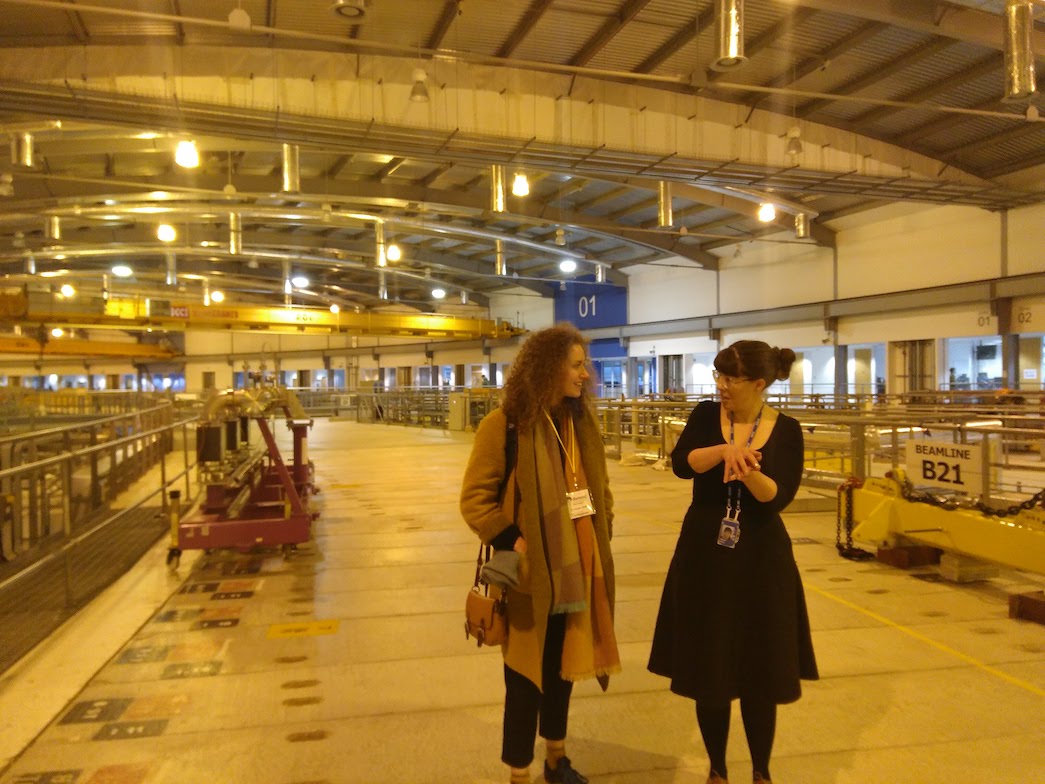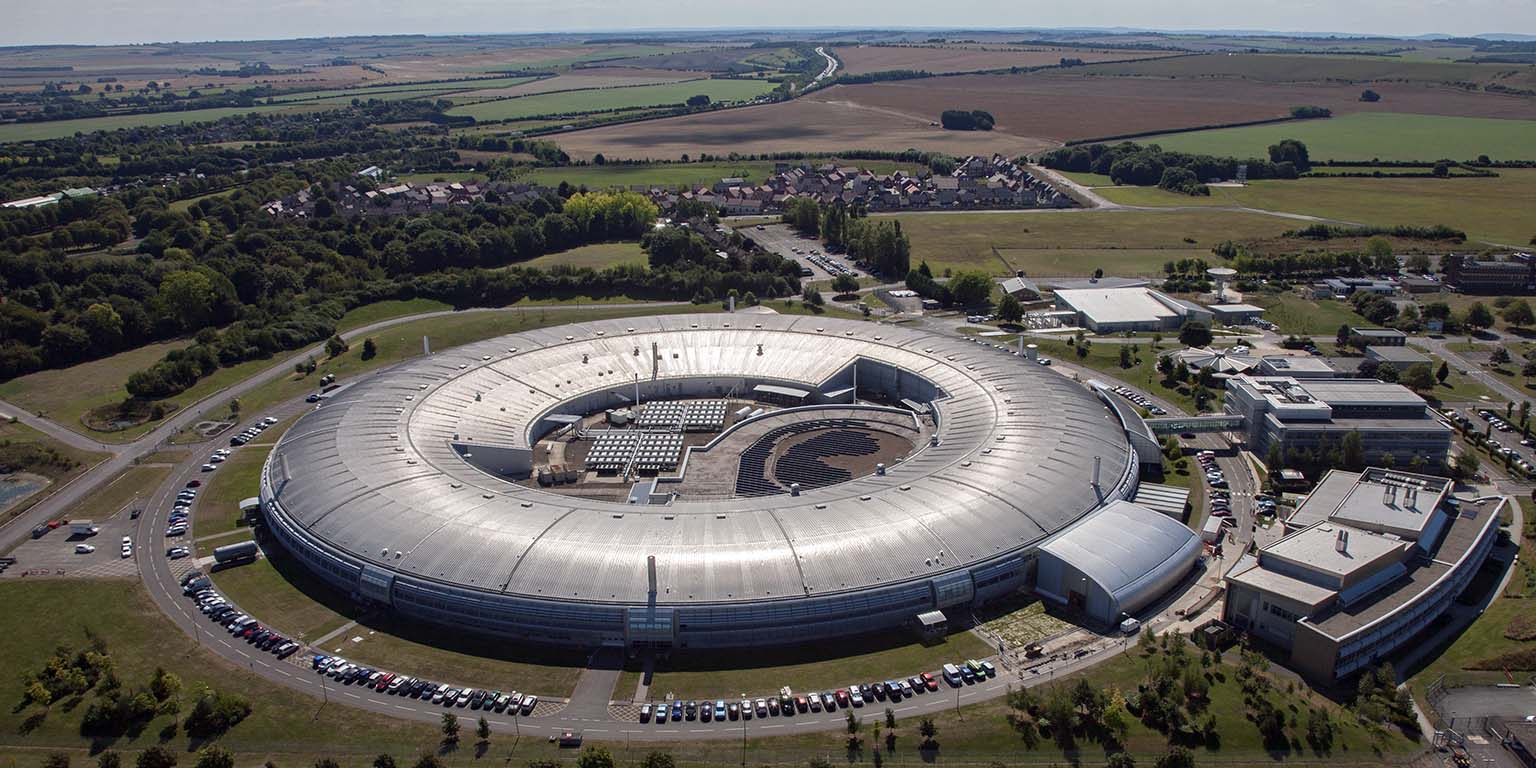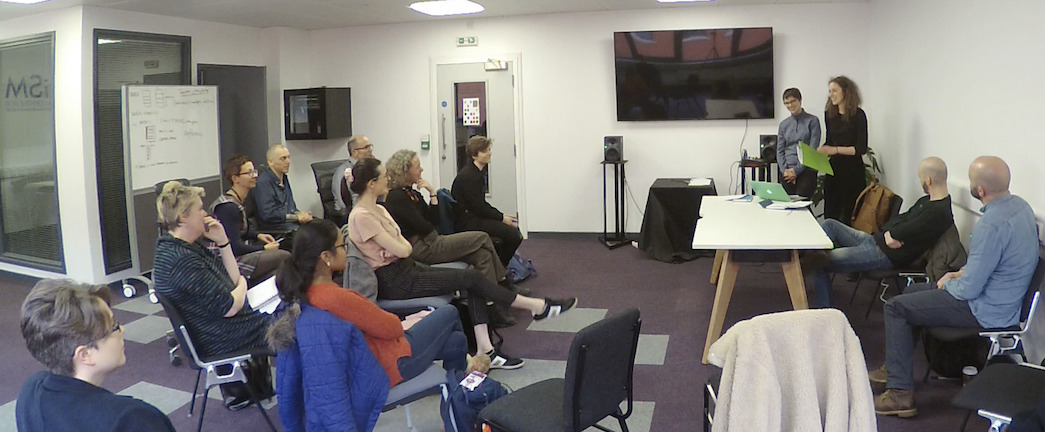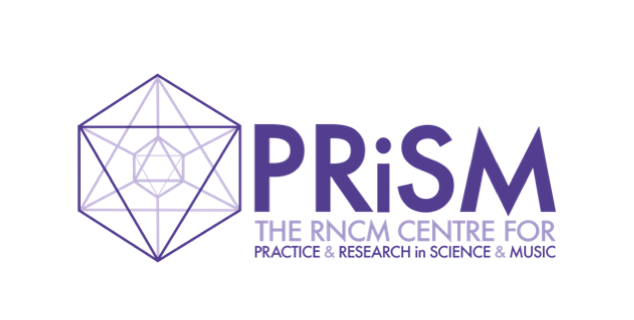Geiger
PRiSM 8³ | Geiger for saxophone, guitar, double bass, piano and percussion
Composer: Ellen Sargen, RNCM
Scientist: Dr Yvonne Grunder, Royal Society University Research Fellow, The University of Liverpool
Visiting the Diamond Light Source

Ellen Sargen with Dr Emelie Hilner, Scientific Communications Manager at Diamond Lightsource
Our project really took off when I went to visit Yvonne at the Diamond Synchrotron in Didcot, Oxfordshire in early January. A synchrotron is a Wembley-sized electron accelerator and allows Yvonne to study changes in the atomic surfaces of metals when they interact with other substances.

The Diamond Light Source, photo from https://www.diamond.ac.uk/Home/About.html
Being inside the Diamond was an incredibly powerful experience. As simple as it sounds, it was exhilarating to be around such huge pieces of equipment – magnets twice the size of car engines pull electrons at nearly the speed of light under your feet, or over your head. It did make my heart beat a little faster knowing that there was very little space between me and a massive dose of radiation (the space was filled by solid lead walls, but even so…).
Developing the piece
Back in Manchester, I had a workshop with RNCM Performance students Tas Noguchi (saxophone) and Maria Rocha (guitar). We worked on textures that imitated the atomic interaction in Yvonne’s experiments, exploring chaotic structures that became regimented over time.
However, none of this material made it into the final piece, which instead became focused around something that happened at the end of our workshop. Inspired by the thrill of working in the Diamond, I had been listening to a lot of Geiger counter samples. I played an example to Tas and Maria and asked what they would do if they were asked to imitate it. The final piece is based around the sounds that Tas and Maria produced in response to this.
I took a field recording of this moment, slowed this down with audio editing software and orchestrated the resultant sound file. With editing, this became the final piece. I was particularly pleased because as well as putting these musicians at the heart of the piece, the resultant textures were perfect for the chaotic atoms that I was originally trying to imitate.

Ellen Sargen and Dr Yvonne Grunder share sounds and their work to date with the group at a PRiSM 8 cubed workshop 3 March 2020
Continuing the work
Yvonne and I had some really great discussions about what the collaboration meant to both of us, and how it was practical and applicable to our respective practices. For Yvonne, this provided a platform so that more people could learn about her work and the UK Diamond.
We extended these ideas to think about how we could make a difference with this platform we had been given. I did some research and found that women were still underrepresented in Physics, in Higher Education and in the workplace.
The score for our 83 RNCM musicians is complete, but we are still working on a version of the piece that can be played by any instrumental ensemble at high school level. We are working on creating an engaging score that gives small facts about the science behind the sounds alongside the music. Cumulatively, the score should show the exciting workplace a physicist has, as well as Yvonne as a role model to inspire the next generation of female physicists.



